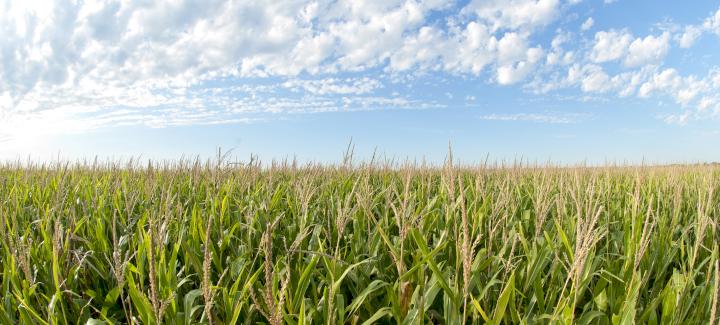Stine® corn has yield, and we are constantly improving our product lineup to ensure we offer the right products for our grower customers’ field types and environments. Several experimental corn numbers have advanced from our Elite Yield Trials to our Master Yield in the Field plots this year and are in production for the 2022 sales season. Of our 15 new experimental numbers, seven are 99 days relative maturity or earlier, which is something we’re excited about as we expand our earlier maturity offerings. Here are a few products we encourage our grower customers to check out when they’re touring Stine plots this summer.
Stine 9003-G Brand Corn
Agrisure® GT trait package
76–78 days relative maturity
Glyphosate tolerant
Strong emergence
Early flowering
Good drydown
Responds very well planted at higher population on highly productive soils
Plant as a full-season hybrid
Stine 9442-G Brand corn
Stine GT™
100–102 days relative maturity
Glyphosate tolerant
Versatile hybrid for all soil types
Medium plant/ear height that will work great on gently rolling hills
Yielded 106% in our 2020 Early/Mid-Elite Yield Trials
Stine 9442-20 Brand Corn
Agrisure Viptera® 3110 and LibertyLink®
101–103 days relative maturity
Best-in-class above-ground insect control
Glyphosate and glufosinate tolerant
Versatile hybrid for all soil types
Medium plant/ear height will work great on gently rolling hills
Yielded 107% in our 2020 Early/Mid-Elite Yield Trials
Stine 9547-G Brand Corn
Stine GT
101–103 days relative maturity
Glyphosate tolerant
Positive response to higher populations (Stine HP® Corn designation)
Yielded 107% of trial average in Stine’s 2019 Early/Mid-Elite Yield Trials, 116% in 2019 trials
Stine 9633E-G Brand Corn
Stine GT
106–108 days relative maturity
Glyphosate tolerant
Responds to increased planting populations
Earlier version of our Stine 9633-G Brand
Excellent choice for higher populations
Yielded 111% of trial average in our Elite Yield Trials
Stine R9658-32 Brand Corn
Agrisure Duracade 5222 E-Z Refuge®
106 days relative maturity
Plant as a full-season hybrid
Plant on average to productive soils
Harvest early for best results
Stine 9659-G Brand Corn
Stine GT
107 days relative maturity
45” ear height
91” plant height
Yielded 113% of trial average in our Elite Yield Trials
Stine 9714X-20 Brand Corn
Agrisure Viptera 3110
106 days relative maturity
39” ear height
90” plant height
Yielded 104% of trial average in our Elite Yield Trials
9709X-20 Brand Corn
Agrisure Viptera 3110
113 days relative maturity
43” ear height
96” plant height
Yielded 106% of trial average in our Elite Yield Trials
Stine R9752-32 Brand Corn
Agrisure Duracade 5222 E-Z Refuge
112 days relative maturity
Plant on loam to clay-loam soils
Fungicide recommended
45” ear height
109” plant height
Yielded 111% of trial average in our Elite Yield Trials
To learn more about our newest elite, high-yielding corn products, contact your local Stine sales representative today.
![YIELD[+]](/images/site/global/logos/yield-plus.png)


